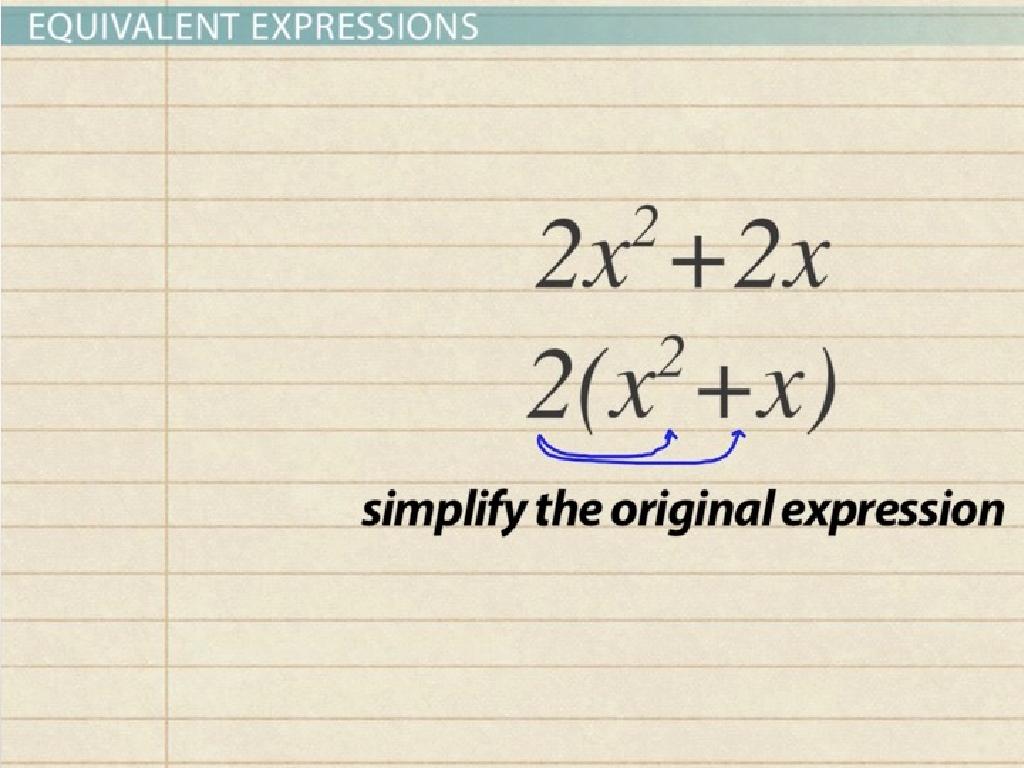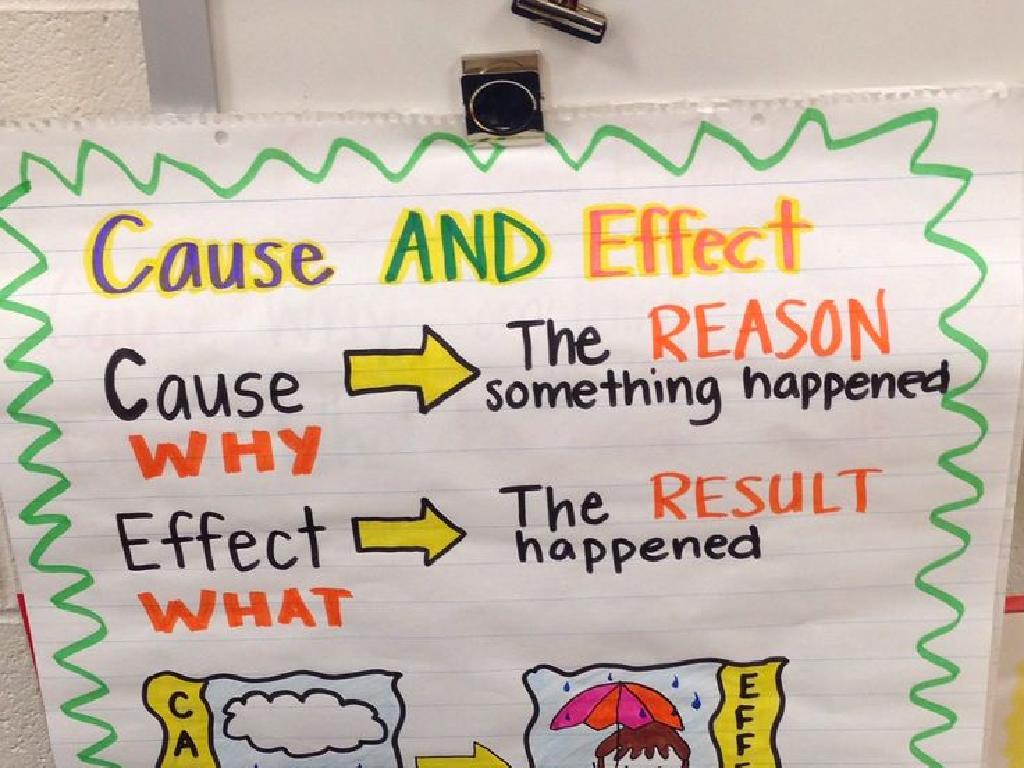Read About Places
Subject: Language arts
Grade: First grade
Topic: Read-Alone Informational Texts
Please LOG IN to download the presentation. Access is available to registered users only.
View More Content
Exploring New Places Through Reading
– Reading takes us on adventures
– Discover places through stories
– Find stories about forests, cities, or the ocean
– Learn about different locations
– Books can teach us about deserts, mountains, or space
– Reading is a journey
|
This slide is designed to spark the imagination of first-grade students and get them excited about the adventures they can have through reading. Emphasize that through books, they can visit new and exciting places without leaving the classroom. Encourage them to think about different environments they can explore, such as forests, cities, oceans, deserts, and even outer space. Explain that each book is like a journey that can take them to learn about different locations around the world or beyond. The goal is to create enthusiasm for reading as a way to learn about the world and to prepare them for the upcoming lessons on reading informational texts about different places.
Exploring Places: From Home to the Moon
– What are places?
– Places are locations like your house or the moon.
– Places are near or far
– Some places are close like your school, others are far like stars.
– Places can be any size
– A place might be as small as your room or as big as an ocean.
– Examples of different places
– Parks for playing, schools for learning, cities and countries to visit.
|
This slide introduces the concept of ‘places’ to first graders in a simple and relatable way. Begin by asking students about places they are familiar with, like their home or school, to make the concept personal and engaging. Explain that places can be anywhere and can vary in distance and size. Use the examples provided to help them visualize different kinds of places they might already know or have heard of. Encourage them to think of other places they know and share with the class. This will help them connect the idea of ‘places’ with their own experiences and understand that the world is full of diverse and interesting locations.
Exploring the World Through Reading
– Learn about the world
– Books take us on adventures to learn about different countries and cultures.
– Discover from the classroom
– We can visit deserts, mountains, or cities by reading stories and facts.
– Imagine exciting places
– Pretend to be in a jungle or on the moon just by turning pages!
– Reading is fun and educational
|
This slide aims to inspire students about the benefits of reading about different places. Emphasize that through books, we can learn about various cultures, environments, and ways of life around the globe. Encourage them to think of reading as a magical portal that allows them to explore far-off lands, historical sites, and even imaginary worlds without having to leave the comfort of their classroom. Highlight the joy of using their imagination to visualize and ‘travel’ to the places they read about. Engage them by asking about places they would like to visit through reading and why it’s exciting to learn about new locations.
Exploring Places Through Reading
– Titles and pictures guide us
– Look at the book’s title and the images on the cover.
– Clues in words reveal more
– Read carefully to discover details about the place.
– Practice finding place info
– We’ll read a book together and discuss what we find.
– Let’s learn about a new place!
|
This slide is aimed at helping first graders understand how to gather information about places from books. Emphasize that the title and pictures are the first hints about what the book is about. Teach them to be detectives, looking for clues within the words that tell more about the place being described. Organize a class activity where students practice this skill by choosing a book, examining its title and cover, and then reading selected passages to find out information about the place. Encourage them to share interesting facts they learn. This will help develop their comprehension and analytical skills.
Reading Time: Exploring Places
– Read a story about a place together
– Listen to descriptive words
– Words like ‘large’, ‘colorful’, or ‘noisy’ help describe places
– Imagine the place in your mind
– Think of the story as a movie in your head
– Share what you pictured
– Tell the class about your mental image after we read
|
This slide is designed to engage first-grade students in a read-aloud activity that focuses on visualization and comprehension. The story selected should contain rich descriptive language to help students create mental images of the place being described. Encourage students to listen for specific words that paint a picture of the setting. After reading, facilitate a discussion where students can share what they visualized. This will help them understand how descriptive words contribute to building a scene in their minds, enhancing their ability to comprehend and enjoy the text.
Let’s Discuss: Our Reading Adventure
– Recall the place we read about
– Identify words that painted a picture
– Words like ‘sunny’, ‘mountains’, ‘forest’ help us visualize
– Decide if you’d visit the place
– Share reasons for your choice
– Tell us if the place seems fun or interesting to you
|
This slide is meant to stimulate a discussion among first-grade students about a place they have read about in an informational text. The goal is to help them practice recalling information and using descriptive words to form mental images. Encourage students to think about the sensory words that helped them imagine the place. Ask them if they would like to visit the place they read about and to explain their reasons, fostering critical thinking and personal connection to the reading material. This activity will also help in understanding the students’ comprehension and engagement with the text.
Your Turn to Read: Exploring New Places
– Pick a book about an interesting place
– Guess the place by title and pictures
– Look at the cover and illustrations for clues
– Read and learn about the place
– Find facts and details in the book
– Share what you discovered
– Tell the class about the place you read about
|
This slide is designed to encourage first-grade students to engage with informational texts by choosing a book about a place they find interesting. The activity is structured to guide them through the process of making predictions based on the book’s title and pictures, reading to gather information, and then sharing their discoveries with the class. It’s a great way to develop their reading comprehension and speaking skills. Teachers should remind students to focus on key details such as the climate, landmarks, and culture of the place they are reading about. Encourage students to think about what makes the place unique and to share any surprising facts they learn.
Show and Tell: Exploring New Places
– Draw a picture of a place you read about
– Tell two facts you learned
– Did you learn about a landmark or a tradition?
– Explain why you chose this place
– Was it the pictures, the story, or something else?
– Share your drawing with the class
|
This slide is for a class activity that encourages students to engage with their reading material about different places. Students should be instructed to draw a place they found interesting in their reading and prepare to share two facts they learned with the class. This activity helps students practice their speaking skills and allows them to express their personal interests. For the teacher: Have a variety of books about different places available for students to choose from. Provide drawing materials and assist students in finding facts if they need help. Encourage them to think about what made the place stand out to them. Possible activities could include drawing a local landmark, a famous world site, or a place from a story. Ensure each student has a chance to present and discuss their chosen place.
Class Activity: Our Places Collage
– Create a collage of places
– Cut or draw pictures of places
– Use old magazines or drawing paper
– Share your collage with the class
– Describe each place on your collage
– Tell us what you like about each place
|
This activity is designed to help students connect with the places they’ve read about by creating a visual representation. Provide students with magazines, scissors, glue, and drawing materials. Encourage them to think creatively and include a variety of places, such as cities, parks, or beaches. Once the collages are complete, each student will present their collage to the class, describing the places they chose and why they included them. This will help develop their speaking skills and ability to recall information from texts. Possible variations of the activity could include working in pairs, focusing on places from a specific book, or creating a themed collage, such as places in winter.






